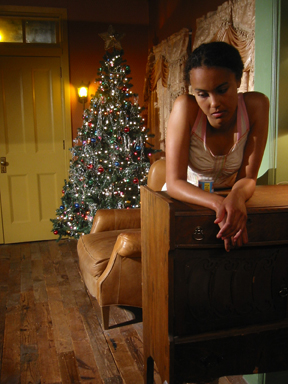
The Sound and the Fury • Press
- The New York Times May 21, 2015
- TimeOut New York January 20, 2015
- Entertainment Weekly May 21, 2015
- Theatermania May 21, 2015
- Exeunt Magazine May 21, 2015
- New York Post May 21, 2015
- New York Daily News May 22, 2015
- Theater Pizzazz! May 21, 2015
- Huffington Post May 21, 2015
- The Bergen Record May 22, 2015
- The Advertiser March 12, 2010
- The Australian March 15, 2010
- Expresso-Actual January 24, 2009
- The New Yorker May 26, 2008
- The New Yorker May 5, 2008
- The New York Times April 30, 2008
- Time Out New York April 30-May 6, 2008
- Time Out New York April 30, 2008
- The New York Sun April 30, 2008
- The International Herald Tribune April 29, 2008
- Backstage April 29, 2008
- Variety April 29, 2008
- The New York Times April 27, 2008
- Variety November 30, 2007
- The Brooklyn Rail April 2008
- The Village Voice March 4, 2008
- Variety November 30, 2007
Flowing With The Flux
by Rita Martins
After the renowned Gatz, a verbatim transposition of Scott Fitzgerald’s The Great Gatsby, the New York company Elevator Repair Service, returned to Culturgest, this time with a production of William Faulkner’s The Sound and the Fury.
Published in 1929, The Sound and the Fury, considered one of the best instances of American modernist fiction, describes the decadence of the Compsons, an aristocratic family in the South of the United States. By using “stream of consciousness” as a narrative technique, Faulkner’s experimental boldness achieves virtuosity in the first part of the novel – “April Seventh, 1928” – narrated by Benjy, the mute son with the mind of a child. And like a child, Benjy can’t distinguish the past from the present and his mind wanders through his memories, associating images, smells and sounds to people and intense feelings – love, fear, anguish. Following the movement of the character’s consciousness, the narrative spans his childhood and adolescence until the present moment, April Seventh 1928, his 33rd birthday.
You could expect the repetition of a formula or the validation of a method, but by selecting the novel’s first section, director John Collins and his fabulous team have chosen to face new enigmas and apparently unsolvable problems. One of the clever solutions was to choose several actors to play the same character with different ages. Such a process makes it easier to identify the different periods (1898, 1910 and 1928), differentiated also by the atmospheres designed by light and sound. However, keeping intact the complexity of the non-linear narrative, at each leap in time the scene, the cast, the light and the sound are altered. In fact, everything keeps changing throughout the show, and there are no rules that allow you to decode the production. It is all as unstable as Benjy’s narrative flux, played almost always by Susie Sokol. The realist set, reproducing a typical Southern family living-room, takes different functions, becoming inconstant in its meanings. And if the book is read by several actors there are also silent passages, solely projected on the wall. But it is in the magnificent sound design (Matt Tierney) that the subjective world resides, and it is through it that we access Benjy’s disturbed inner life.
Offering Faulkner’s prose, word for word, its hypnotic effect is reproduced and unforgettable theatrical moments are added to it, such as the strange Southern dance, with a hilarious choreography, Vin Knight as the old Dilsey, the Compsons cook, and Annie McNamara as a perfect Caroline, the neurotic and hypochondriac mother. Yet it would be unjust to mention just some of the performers when, structuring the chaos, the ensemble’s coordination is absolute, the simplicity of the performances is rigorous and the directing is mindful of everything to the last possible literary or staged detail. And if the show demands of its audience their full attention, it also offers a double pleasure: that of literature and that of theatre. And then we just have to go with the flow.